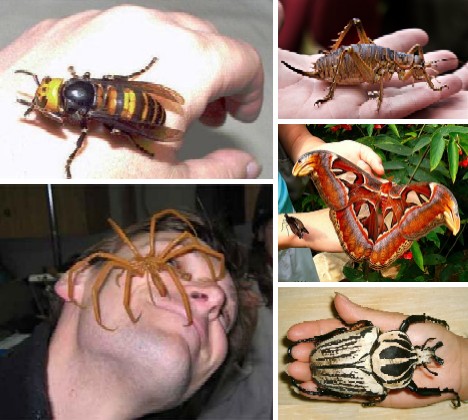
Bugs… though most are small, even tiny, the ancient order of Arthropods boasts over a million species and includes more than half the world's living organisms. With such variety and diversity, insects, spiders, and their exoskeletoned ilk push the envelope on a number of fronts including size, so put away that fly-swatter – you definitely do not want to make these guys mad!
Ancient Giant Bugs
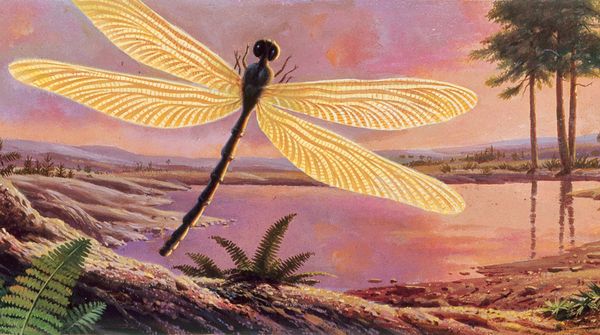
(image via: Nattional Geographic)
The history of life on Earth is a long and complex story with changing geologic, climactic and environmental conditions continually shuffling the genetic deck. Mammals, reptiles, birds, fish and insects have all produced giants in the past, so it's worth looking at some of prehistory's largest insects to put their modern descendants into perspective.
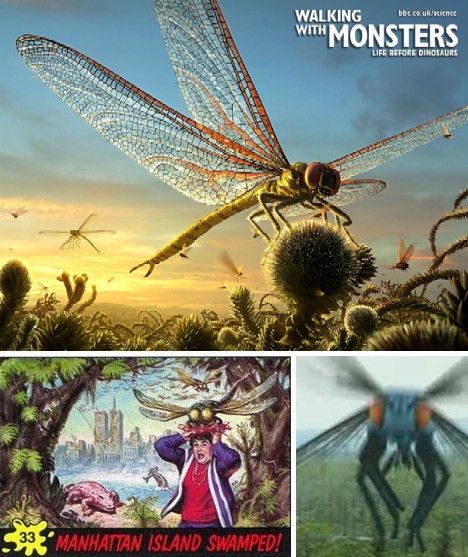
(images via: Animal Pictures Archive and Club Des Monstres)
The most notorious of these ancient giant insects lived during the Carboniferous period approximately 300 million years ago; the most well-known examples are the giant dragonfly Meganeura (above) and the giant centipede Arthropleura.
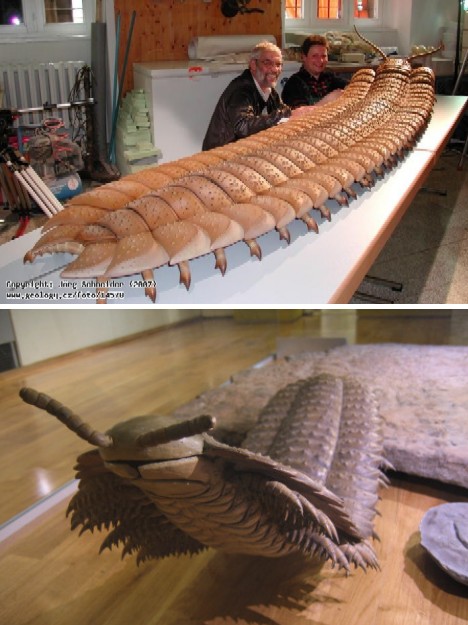
(images via: Fotoarchiv and Discovering Fossils)
Meganeura had a 2.5-ft (0.75 meter) wide wingspan and scientists speculate it ate other flying and crawling insects; even some of the smaller early amphibians that were just beginning to colonize dry land. Arthropleura, on the other hand (or maybe, the other foot) stretched up to 8.5 feet (2.6 meters) long and may have eaten both plants and small animals.
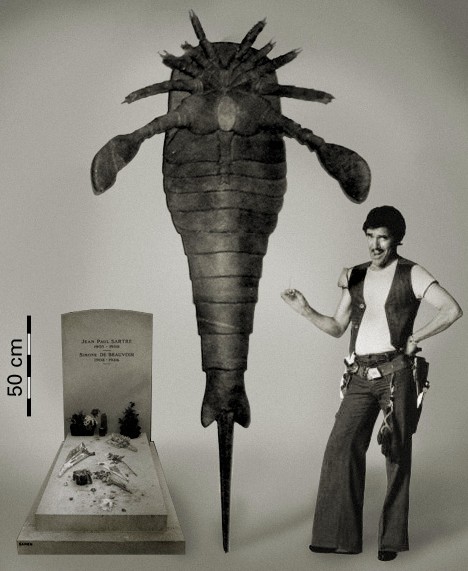
image via: The Nonist)
The all-time champ when it comes to huge proto-insects was Jaekelopterus rhenaniae, a Eurypterid sea scorpion that lived from 460 to 255 million years ago. It likely dined on our primitive marine ancestors – and pretty much anything else it encountered. Growing up to 8 feet (2.4 meters) long, Jaekelopterus rhenaniae was the largest Arthropod to have ever evolved. At least, so we hope.
Goliath Beetle
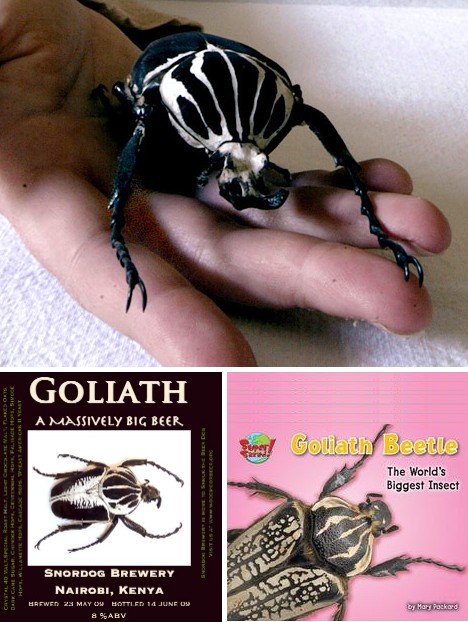
(images via: Animal Planet, Woodmoor Beer and Buy.com)
Deep in the jungles of darkest Africa one may find the biggest, bulkiest, heaviest insect on Earth: the Goliath Beetle. Male Goliathus' can grow up to 4.3 inches (110 mm) long and their larvae can weigh up to 3.5 ounces or 100 grams: a true mega-maggot! Hobbyists have raised Goliath Beetles in captivity by feeding the newly hatched larvae dog or cat food.
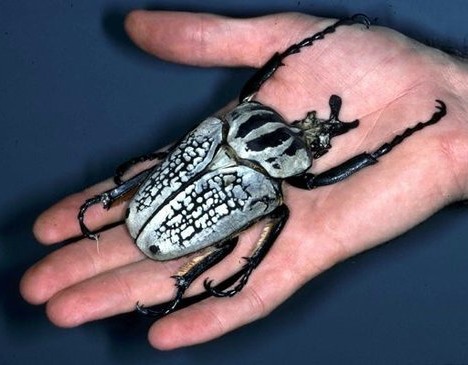
Goliath Beetles are members of the Scarab Beetle family and it's likely they were known to the ancient Egyptians. They can also fly using a single pair of clear membranous wings normally protected under their hinged shells. The sound of a Goliath Beetle in flight has been likened to that of a small helicopter.
Camel Spiders
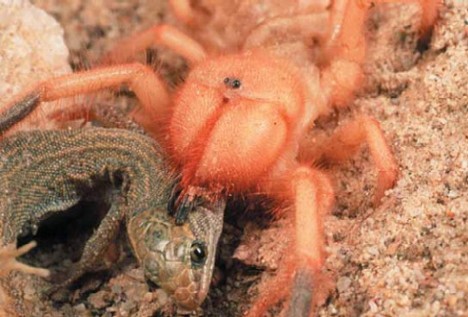
(image via: Alchemy Imageworks)
While insects today have been cut down to size, so to speak, there are still some large enough to put a healthy scare into other animals, not to mention us. Take the Camel Spider… take it AWAY, is what I really mean to say! Give our brave troops slogging through Iraqi deserts extra props for having to deal with these eight-legged freaks.
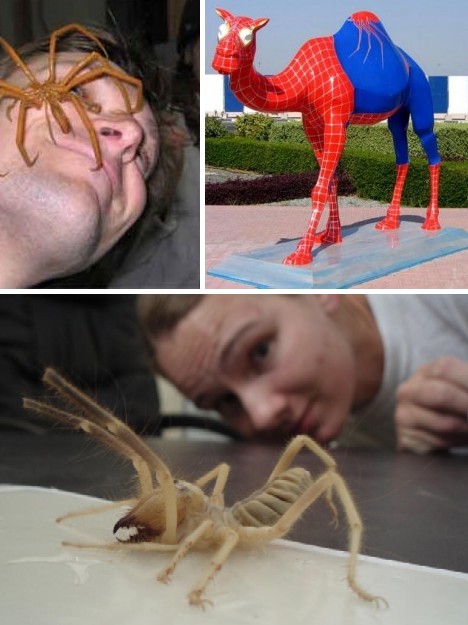
(images via: Jim Meads, Woosk.com and Rod Maher)
While many of the tales told about Camel Spiders are fabrications (such as, they sometimes can be seen running alongside Humvees, screaming all the while), these arachnids can grow up to 10 inches (25 cm) wide, run as fast as 10 mph (16 kph) and like to hide in dark, sheltered places… like sleeping bags.

(image via: CamelSpiders.net)
This famous photo of two Camel Spiders locked in mortal combat has made the rounds of the Internet but anything this creepy deserves another go-round. Note the spot-on desert camouflage coloring (troops and spiders) and their nasty-looking fangs (just the spiders). By the way, Camel Spiders are not found only in Iraq or the Middle East – try right next door in Mexico where they're known as "matevenados"… in English, that means "deer killers." Th-Th-Thumper, is th-that you??
Giant Water Bugs
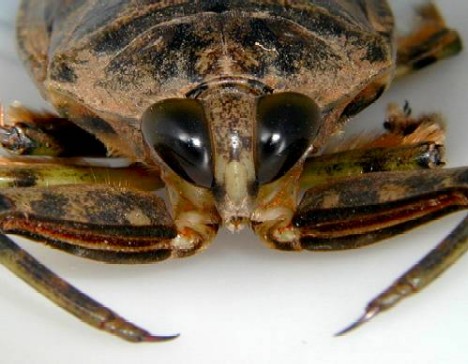
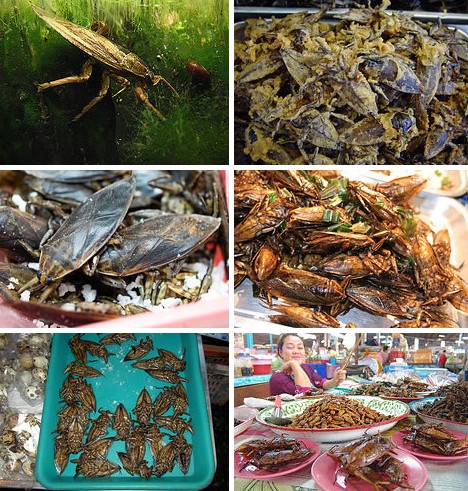
(images via: LostSprings.com and GreenPacks)
Giant Water Bugs of the genus Lethocerus, also known as "Toe Biters" – lovely, huh? – grow up to 5 inches (12 cm) long and are the terrors of freshwater ponds, gorging themselves on other insects, crayfish, tadpoles and the odd unlucky fish. When they bite a potential meal (or perhaps, your toe), the bugs inject an enzyme that liquifies tissue making it easy for the bug to slurp up its meal.
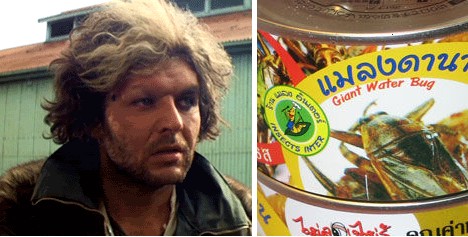
(images via: Adam Vandenberg)
Needless to say, a bite from a Giant Water Bug can be exceptionally painful and victims have been known to suffer permanent muscle damage. Toe Biter 1, ToeCutter 0. 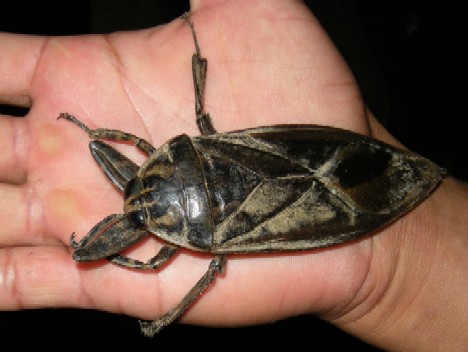
(image via: What's That Bug)
Most of us would be happy to avoid Giant Water Bugs altogether but that's just impossible: they're so darned tasty! I'm not speaking from personal experience (though my Mom tells me I ate a June Bug once when I was 2, and said it was "good") but Giant Water Bugs are a delicacy in Thailand where they're caught using black (UV) light floating traps. Very nice, but I'm sticking to the Pad Thai if that's OK with you.
Japanese Giant Hornet
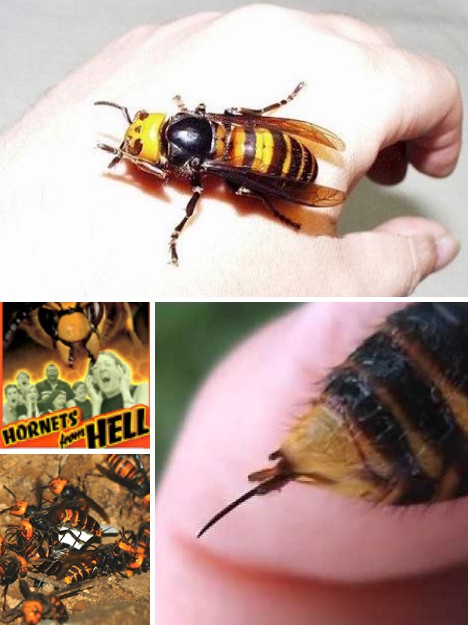
(images via: Homely Scientist, Scinema 04 and TerritorioScuola)
Japanese Giant Hornets, unlike tarantulas, are NOT mild-mannered and most definitely do not make great pets. Great pests is more like it. Let's start with size: up to 1.6 inches (4 cm) long with a 2.5 inch (6 cm) wingspan. In Japanese they're called Oo-Suzumebachi, or "Giant Sparrow Bee"… and unlike everything else in Japan, there's nothing cute about them. They kill, on average, 40 people every year. That's more than the total number of deaths attributed annually to ALL wild animals in Japan, put together.
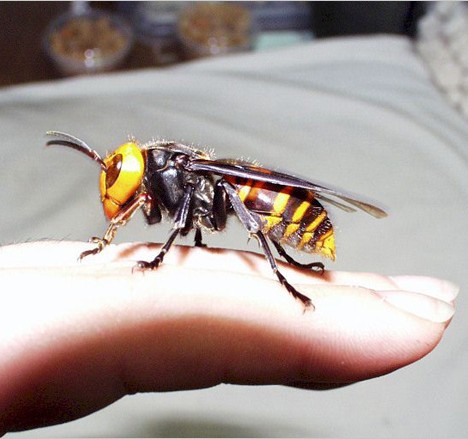
(image via: Pretty Paisley)
The venom of Japanese Giant Hornets is considered to be "very potent", and it's injected through a wickedly curved stinger 1/4 inch (6.25 mm) long. The sting itself was reported by Masato Ono, an entomologist (and sting-ee) from Tamagawa University, to feel "like a hot nail being driven into his leg". Oh, and it gets worse – an annoyed Japanese Giant Hornet will chase a perceived threat (read: YOU) for up to 3 miles and it can fly at speeds up to 25 mph (40 kph). Guess who wins that race. And… yes, there's more… this fiendish uber-wasp disperses a pheromone that will draw other hornets from far and wide. It bee nice knowin' ya!
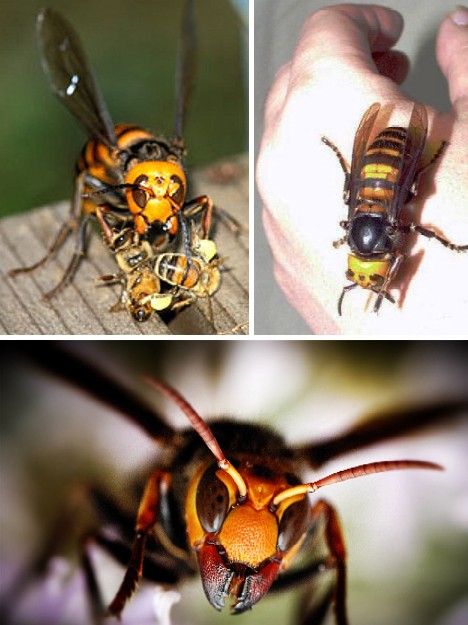
(images via: Ugly Overload and Arthropoda)
Though we can't blame Colony Collapse Disorder and the accompanying loss of millions of honeybees on the Japanese Giant Hornet, they should at least be brought in for questioning – not by me, of course. Check out the following video in which about 30 giant hornets take on a hive filled with around 30,000 honeybees by going all Ozzy Osbourne on them. The result? More bee-heading than in an Al-Qaeda member's wet dream: 30 Hornets vs. 30,000 Bees, via Silentrouge
Giant Weta
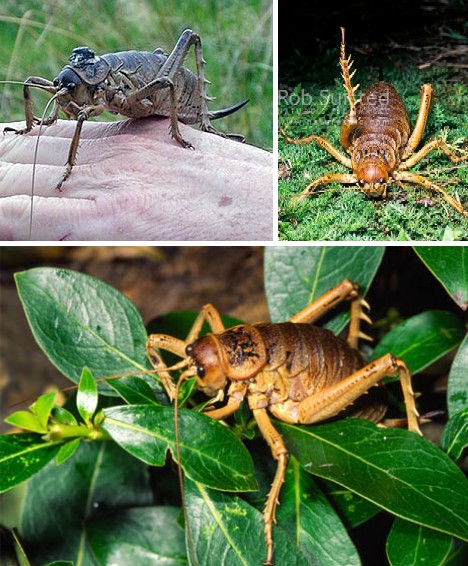
(images via: University of Stirling, Naturespic and 10 Daily Things)
The Giant Weta encompasses 11 varied species, growing to a length of 8 inches or 20 cm. They're found only in New Zealand and its nearby islands where they took over the ecological niches normally filled by rodents such as mice. When rodents were introduced to New Zealand by human settlers, the Giant Weta went into rapid decline.
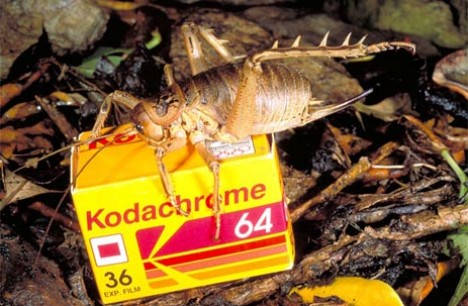
(image via: 10 Daily Things)
The Giant Weta's genus name, Deinacrida, is Greek for "terrible grasshopper" and it's a good choice as the spiky, spiny creature resembles some sort of radioactive mutated cricket from Hell. Even the native Maori were put off by the Giant Weta when they first encountered it, dubbing it "Weta Punga", or "god of ugly things." Yep, that's one big ugly bugly.
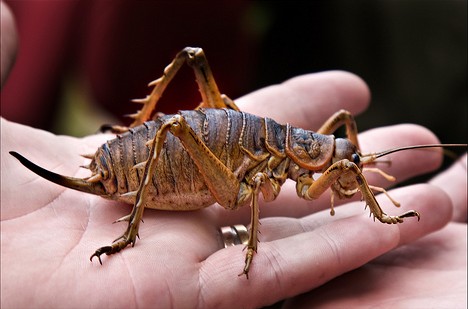
(image via: Kiwi Mikex)
Giant Wetas are flightless and have struggled to survive after the introduction of non-native predators to the New Zealand archipelago. They are among the world's heaviest insects with one specimen weighing in at a startling 2.5 ounces (70 grams). One wicked cricket… and we're gonna need a bigger wicket.
Atlas Moth, Queen Alexandra's Birdwing Butterfly
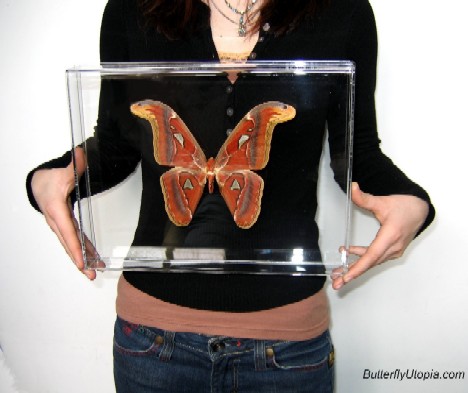
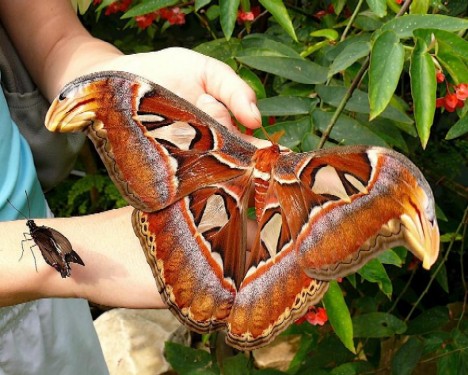
(images via: Butterfly Utopia and Pixdaus – Danif)
The Atlas Moth and the Queen Alexandra's Birdwing butterfly are the largest of the moths and butterflies, each achieving wingspans of over a foot (30 cm). The Atlas Moth, found in southeast Asia, the Malay archipelago and on the Indian subcontinent has been cultivated commercially for the silk used by its caterpillars to weave their cocoons. Entire Atlas Moth cocoons have been made into women's purses in Taiwan, where the women are obviously not at all squeamish.
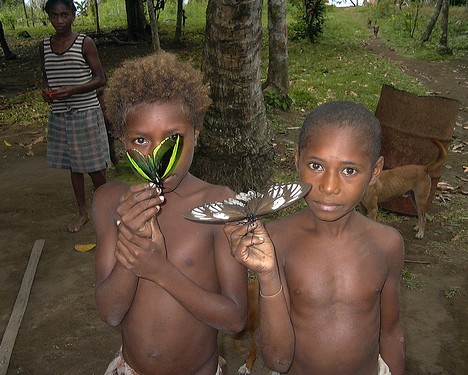
(image via: Vai Passar)
The Queen Alexandra's Birdwing butterfly was first discovered by European naturalists in 1906, when a collector in what today is Papua New Guinea brought one down using a shotgun. Females have rounded wings than males and wingspans can reach just over 12 inches (31 cm) with body lengths of 3.2 inches (8 cm).
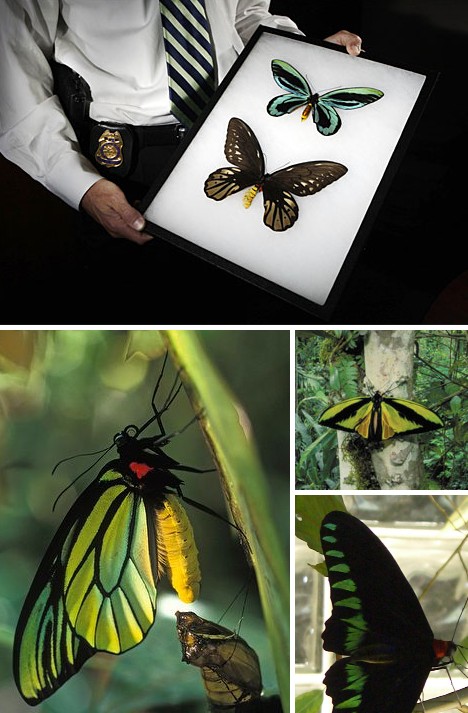
(images via: USA Today and Arkive)
Queen Alexandra's Birdwing butterflies emerge from their cocoons in the humid early morning hours, before the daytime's hotter air can prematurely dry out their huge wings. Male butterflies are territorial and have been seen chasing away birds that inadvertently flew into their perceived domains.
Goliath Birdeater Spider
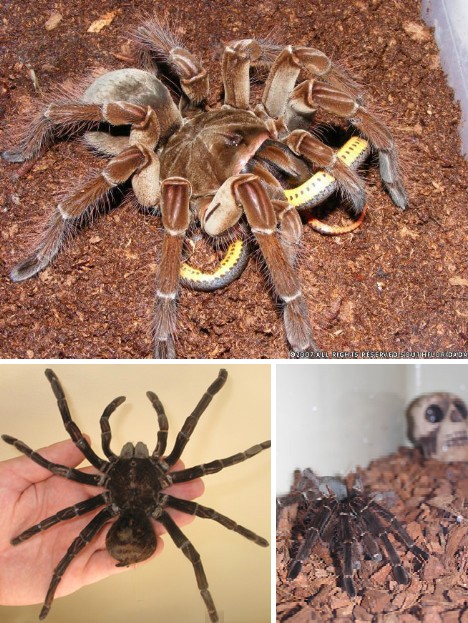
(images via: Cute and Weird, Bugman 123)
Besides being a great band name, the Goliath Birdeater is one of the world's largest spiders. These jungle-dwelling tarantulas have an 11 inch (25 cm) leg span which puts them on par with the smaller-bodied Giant Huntsman spider of Laos. The Goliath Birdeater comes out ahead when it comes to weight, with mature specimens topping out at over 6 ounces (170 grams). Oh, the name? The first researcher to describe them observed one eating a hummingbird. They have also been known to kill and eat mice, bats, lizards, and small poisonous snakes.
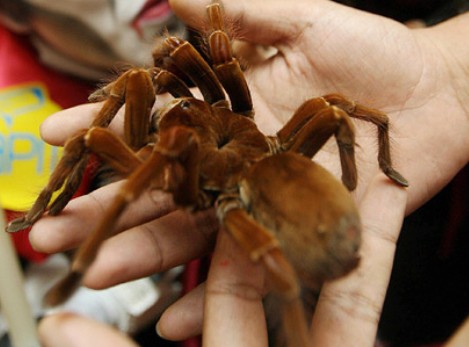
(image via: Cute and Weird)
As fearsome as they may appear, the Goliath Birdeater spider and other large tarantulas of the Amazon rainforest are not particularly aggressive – good thing! Even when they do bite humans and their fangs (which can be up to 1.5 inches or 3.8 cm long) pierce skin, they rarely inject venom and bites are relatively – relatively – painless. It's not the fangs that are the main problem for people, it's the hairs that irritated tarantulas shake off their bellies. Incredibly thin and wickedly barbed, these hairs can become lodged in one's eyeballs and are nearly impossible to remove.
Tarantula Hawk Wasp
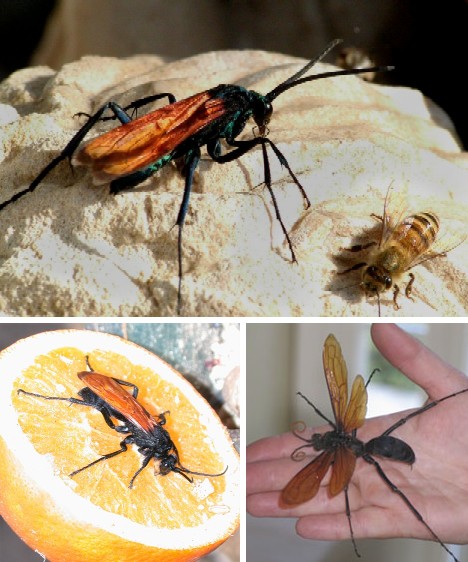
(images via: Hillside Photos, Birdfotos and Durango Nature Studies)
Another big bug with a seriously scary name, the Tarantula Hawk Wasp doesn't live in some faraway jungle or exotic island… nope, it's from New Mexico! In fact, the State of New Mexico adopted the Tarantula Hawk Wasp as their official state insect in 1989. If you happen to come across one, however, you're officially advised to leave it alone! Though not considered to be aggressive, the Tarantula Hawk Wasp WILL sting you if pestered, and then… let's just let Justin O. Schmidt, author of the Schmidt Sting Pain Index, describe it: "Blinding, fierce, shockingly electric. A running hair drier has been dropped into your bubble bath." Officially the sting of the Tarantula Hawk Wasp rates 4 on the Schmidt scale – which only goes up to 4.
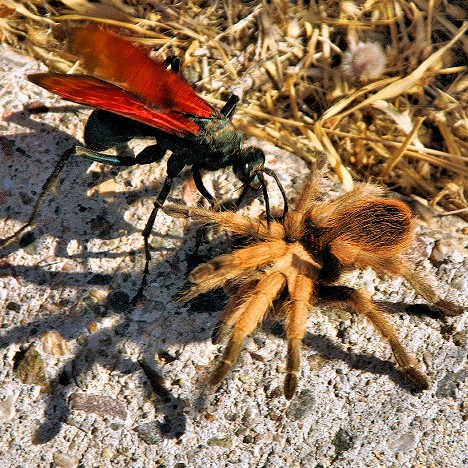
(image via: Hillside Photos)
Tarantula Hawk Wasps are among the world's largest wasps, growing up to 2 inches (50 mm) long. Unlike most familiar black & yellow banded wasps, they have bluish-black bodies and bright orange or rust-colored wings. As you may have guessed, they prey on tarantulas and other large spiders of the south-western desert.
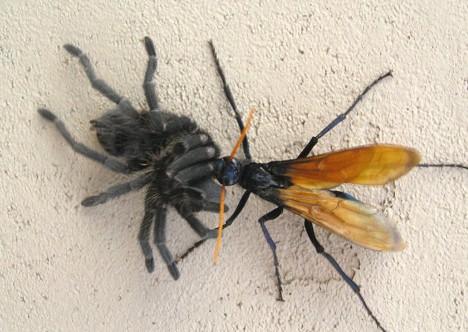
(image via: EmoFC.com)
A sting from the wasp doesn't kill the spider; that would be too kind. Instead, the wasp drags the paralyzed spider – a significant feat of strength, by the way – back to its burrow and lays an egg on its body. The egg then hatches and immediately begins eating its still-living meal. One spider-roll to go! Here's a video of a Tarantula Hawk Wasp going stinger to fangs with a tarantula – be afraid, tarantula, be VERY afraid! Tarantula Hawk Wasp Attacks Tarantula, via CreekerCouncil
Giant Walking Stick
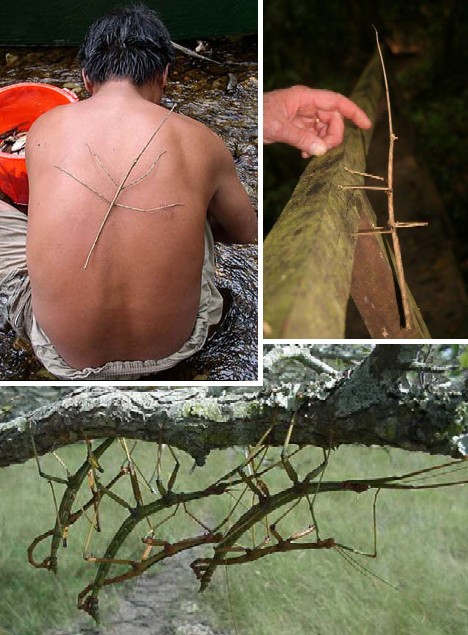
(images via: MethodShop, Mongabay)
Entomologists have described over 3,000 species of Stick Insects, and those of the genus Phobaeticus – the Giant Walking Stick – are the world's longest insects by far. Not including extended legs, these amazing creatures measure as much as 13 inches (33 cm) from head to the tip of their abdomen. Though Stick Insects of all types are strictly herbivorous, some species secrete a substance that produces intense irritation in the eyes and mouths of predators (or overly curious humans). In some cases, victims have been afflicted with temporary blindness.
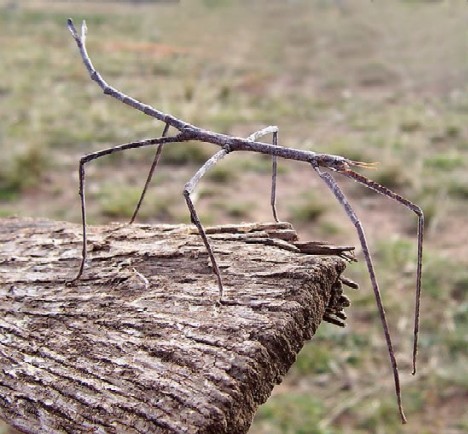
(image via: Qskan)
A smaller species known as the Indian or Laboratory Stick Insect (Carausius morosus) is a popular pet – and no opposite sex is required for breeding because they are both male and female, reproducing via parthenogenesis. Their geeky owners can only look on with envy.
Giant Isopod
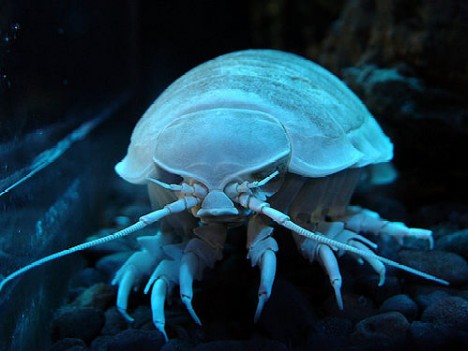
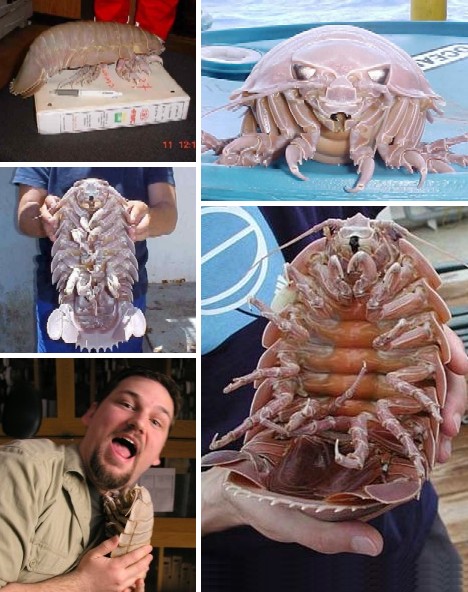
(images via: Marki's Block and ScienceBlogs)
What happens to whales when they die and sink deep, deep down to the Stygian depths of the ocean floor, miles below the surface? The Giant Isopod knows… and waits patiently, because the bigger they are, the harder they fall, and a decomposing whale is a blubbery buffet that keeps on serving way past closing time.
.
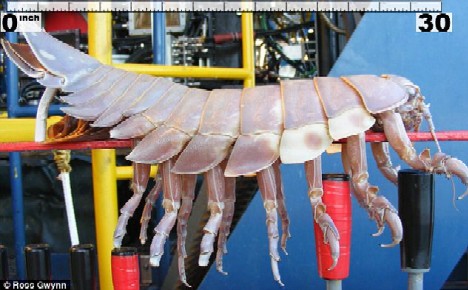 (
(
image via: Daily Mail UK)
Giant Isopods of the genus Bathynomus normally grow up to 14 inches (35 cm) in length, although one found clinging to a remote-controlled submarine operated by oil workers in the Gulf of Mexico last April (2010) measured an astonishing 30 inches (75 cm) long!
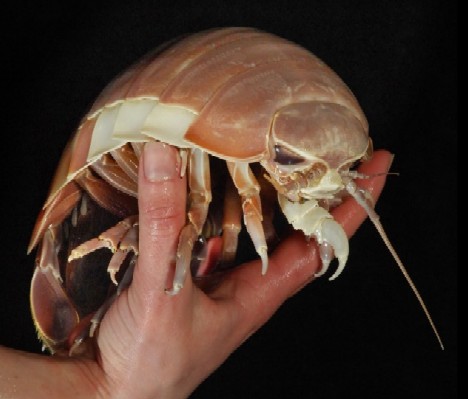
(image via: Qskan)
Here's a video of some Giant Isopods (and their scavenging buddies) in action, pumped up with a Yakety Sax soundtrack c/o the awesome BennyHillifier: Time-Lapse Video of Deep Sea Feeding Frenzy, via Lifeisadancer Isopods are actually a type of crustacean but they're included here because their close relatives, the common terrestrial woodlouse or pillbug, is one of the commonest bugs people see. As for the deep sea Giant Isopod, if you thought its whale-eating lifestyle was weird, consider that of another isopod: Cymothoa exigua, the tongue-eating louse.
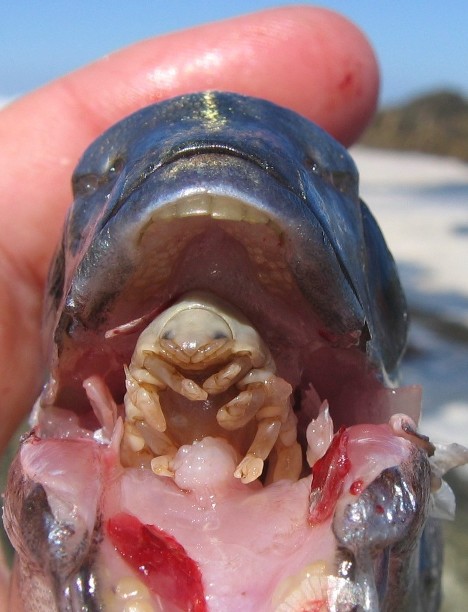 (
(
image via: WebEcoist)
This li'l feller finds its way into a fish's mouth and after avoiding being swallowed, bites the fish's tongue and begins drinking its blood. After a while, the fish's tongue shrivels up from lack of blood flow but Cymothoa doesn't want its host to die… so it firmly grips the tongue stub with its lower legs and begins to act as the fish's tongue! Nature… and you thought it was all rainbows, blossoms and Bambi. 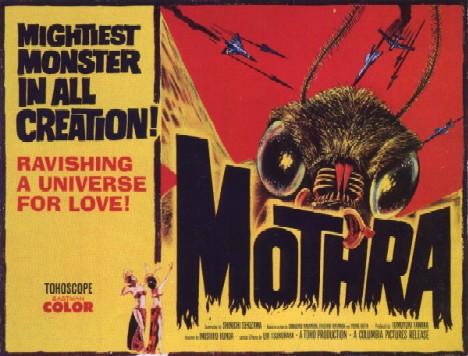

(image via: Little Black Star)
If real large insects aren't frightening enough, fictional ones should tip the scales… as in the classic Japanese sci-fi movie monster Mothra, who would often subdue competing creatures with a shower of poisonous scales. Nice to know Hollywood Far East has put our primeval fear of big bugs to good use. Oh, and… goodnight, sleep tight, and don't let the big bugs bite!








